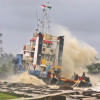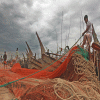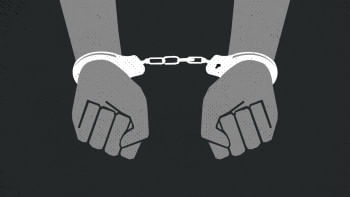Roanu victims still suffer
Hundreds of students in Patuakhali's Kalapara Upazila can no longer go to their school. A dyke, which served as a road to their school had collapsed during the Cyclone Roanu. In Kutubdia of Cox's Bazar, the situation is similar. Hundreds of houses were destroyed in the cyclone, and now the inhabitants have to sleep out in the open, living on little or no food.
The two cases are a fair representation of the condition of the southern part of the country after Roanu had hit Bangladesh. The death toll was minimum, since pre-disaster management was quick to relocate the people. But, post-disaster, the situation is dire. What the government achieved in preventing loss of lives is being undone by its inadequate reponse.
We have come a long way in terms of disaster management. More than 3,000 people were killed by Sidr and around 200, by Aila. In contrast, a little more than 20 died during Roanu. A massive evacuation plan was undertaken, weekly holidays for officials cancelled in 18 coastal districts, and in Noakhali, Laxmipur and Feni, more than 5 lakh were moved to cyclone shelters well before the cyclone made landfall.
So, why this lax in rehabilitating the affected people after the cyclone? The government seems to be ambivalent towards post-cyclone rehabilitation, since there is no direct casualty from this. But loss of homestead, lack of food supply, and a return to normalcy of their lives is just as important. We have come a long way in preventing the loss of lives due to natural calamities. We now urge the government to take steps to ensure post-disaster efforts are taken so that those affected can go back to normal life.

 For all latest news, follow The Daily Star's Google News channel.
For all latest news, follow The Daily Star's Google News channel. 








Comments